How to identify the weight and count of knitted fabrics
The count refers to the characteristics of cotton yarn weighing one pound (454 grams)
The number of lengths of 840 yards. The higher the count, the finer the yarn. For example, 48S is thinner than 23. Gram weight refers to per square meter
The weight in grams the fabric has. Generally speaking, for yarns of the same quality, the larger the count, the greater the weight.
The conversion between the gram weight of gray fabric and the gram weight of finished product, if calculated by a formula, may deviate greatly from the reality. The main reasons are twofold. The setting of gray fabric can be calculated by formula. As long as the conditions are closer, the result will be more accurate, because the weaving process is Physical changes, from gray cloth to finished cloth, go through multiple processes of dyeing and finishing. The fabric undergoes physical and chemical changes, and the variables increase. Various types of machinery, processes, etc. are involved during the process, resulting in different enterprises. Therefore, each enterprise has its own standards for the conversion of the gram weight of gray fabric and the gram weight of finished product.

Conversion between the gram weight of gray fabric and the gram weight of finished product
How to establish the conversion formula? It is recommended to collect the company’s past results from embryonic fabrics to finished fabrics, and then use a computer to screen the most common results as the standard. Then evaluate its practicality based on the company’s production conditions, and then set a conversion formula.
Example reference: (general cloth, general weaving, dyeing and finishing process) embryo weight == order finished product weight x embryo weight coefficient
cloth embryo weight coefficient: plain weave 92% / pair Beads 88%/Double-position clothing 89%/Single beads 93%/Unit clothing 89%/Stretch plain weave 100%/Towel 106%/Double-sided 88%/Stretch rib 91%/Rib 83% Pull-frame light core 92%/Light core 87%.
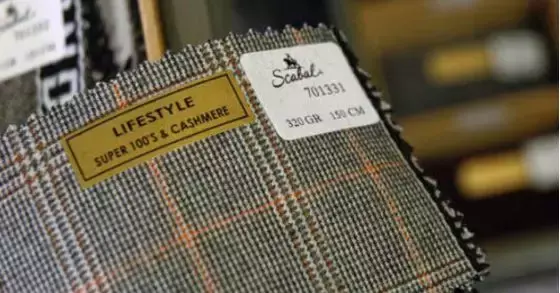
⑴. Gray cloth weight: refers to the weight per unit area of the fabric, generally expressed in grams per square meter (g/m2). The simplest calculation method in business.
For example: cotton fabrics are generally in the range of 70 to 250 g/m2;
The weight of Veridin (combed) wool fabrics is around 185 g/m2;
Thick tweed (carded) is about 280g/m2;
Thin silk fabrics are generally between 20 and 100 g/m2.
The weight of gray cloth is also one of the quality indicators for assessing the physical properties of fabrics, which is more important for woolen fabrics. In the “Ministry-issued” standards for combed wool fabrics and wool-type chemical fiber fabrics, it is stipulated that if the weight per square meter is too light to exceed the allowable tolerance (stipulated as 5%), it will be classified as first-class product; if it exceeds 5% but does not exceed 7%, it will be classified as first-class product. Second class product.
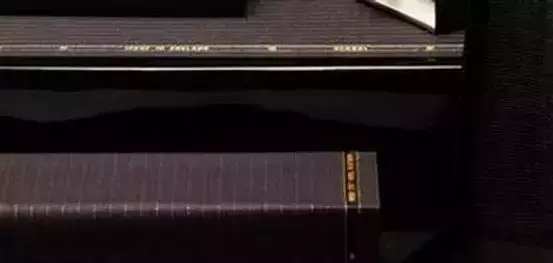
⑵. Calculation method according to “Ministry-issued Standards” (moisture regain factor should be deducted):
In the formula: GK
–The square meter weight under the public moisture regain (g/m2) GO –The dry weight of the sample (g) WK –The public moisture regain of the sample (%) L –The length of the sample (cm) B
–Sample width (cm) The constant moisture regain (WK) of commonly used yarns is excerpted as follows: Cotton yarn: 8.5% Combed wool yarn: 16% Carded wool yarn: 15%
Polyester/cotton yarn (65/35): 3.2%.
⑶. Calculation method of square meter weight based on approximate fabric structural factors:
In the formula: NtT – Warp yarn Tex number (number) NTw – Weft yarn Tex number Max number (number) PT – Warp yarn density (root/10cm) PW – Weft yarn density (root/10cm).
This calculation formula is an approximation and does not take into account the bending and elongation of the yarn and the weight change of the fabric during processing. (Note: The Tex number (number) refers to the weight (g) of a 1,000-meter-long yarn at a common moisture regain.)
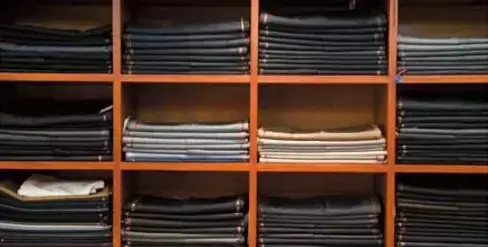
The dry weight of one square meter of cotton cloth without pulp:
In the formula: G——The dry weight of one square meter of cotton cloth without pulp (grams);
Gj——The dry weight of the warp yarns of one square meter of cotton cloth (grams);
Gw——The dry weight of the weft yarns of one square meter of cotton fabrics (grams);
p>
Pj——The warp density of cotton cloth (roots/10 cm)
Pw——The weft yarn density of cotton cloth (roots/10 cm);
gj——Warp yarns Standard dry weight of weft yarns (g/100 meters);
gw——Standard dry weight of weft yarns (g/100 meters);
Fj——Total fly rate of warp yarns;
aj——warp yarn shrinkage;
Sjz——warp yarn total elongation;
aw——weft yarn shrinkage.
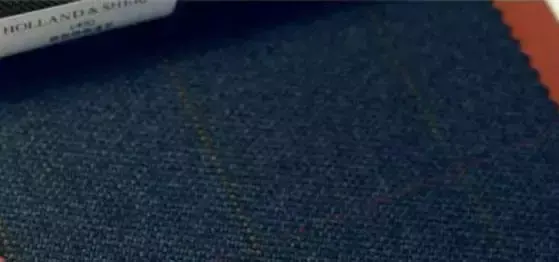
Among them:
1. Standard dry weight of warp and weft yarns (g/100) = metric number * 0.92166 /10 or =53.74 /Imperial count
2. The weight of the strands is calculated based on the combined weight.
3. The total elongation of warp yarns: The sizing single yarn is calculated as 1.2% (of which winding and warping are calculated as 0.5%, and the sizing yarn is calculated as 0.7%). Sheung Shui stock line 10 below No. 2 is calculated as 0.3%, and No. 10 above No. 2 is calculated as 0.7%.
4. The elongation of indirect weft yarn is small and can be ignored.
5. The total warp fly rate: 1.2% for thick-sized (count) fabrics; 0.6% for medium-sized (count) plain weave fabrics; 0.9% for twill fabrics; fine-sized (count) fabrics Calculated as 0.8%; calculated as 0.6% for thread fabrics.
6. The total elongation of warp yarns, the total fly rate of warp yarns and the weaving shrinkage rate of warp and weft yarns are calculated.��The basis for fabric weight per square meter is not a prescribed index.
A simple method for price verification and workshop collar yarn estimation: warp yarn for 100 meters = warp density/count * door width * 0.0065; weft yarn for 100 meters = weft density / count * door width * 0.0065
More reasonable: (for craftsmen) 100 meters of warp = (warp number * total warp number / (1 – warp shrinkage)) / 10000 * 1.01
One hundred meters of weft yarn = number of weft yarns * weft density * 3.937 * (reed width + yarn return) / 100000 * 1.003 yarn return – 12cm for elastic yarn and 8cm for plain yarn
This formula is widely used for convenient calculations by sales staff (it was not invented by Note). The principle is correct, the calculation is simple, and errors are inevitable (what you call
101g/m2, is it absolutely correct? Definitely not, it’s just more accurate). Square meter weight of gray fabric = (warp density + weft density) * 1.1 * 59 / ( 2.54 * yarn count) = warp density * 1.1 * 59 / ( 2.54 * yarn count ) + weft density * 1.1 * 59 / ( 2.54 * yarn count) branch).

Warp and latitude:
a. Longitude (latitude) density/2.54——–will Conversion of imperial density to metric density
b. Coefficient 1.1——-is a comprehensive consideration of warp (weft) shrinkage and warp (weft) yarn loss, which is about 10%. Although there is a deviation, As a convenient and quick calculation, it is not a big deal.
c.59/yarn count——-is the conversion of British yarn count into metric special number, which is a combination of cotton 583.1, polyester 590.5, etc. The conversion coefficient is 590. Although there is an error, it is not a big deal.
d. I have not listed all the specific unit conversions involved. I believe you should have this basic knowledge. have it.
To sum up: warp a * b * c + weft a * b * c = precision + weft density) * 1.1 * 59 / (2.54 * yarn) = fabric cost per square meter of gray cloth Accounting data: yarn usage per meter = (warp density + weft density) X0.065X finished product width X1.01
Example: 45s
T/C*45sT/C 110*70 58/59″ polyester cotton rice (yarn price: 26,000 yuan/ton)
Yarn usage per 100 meters = (110+70)/45X0.065X59X1.01=15.5KG/100 meters
The amount of yarn used per meter is 155G/M. The yarn dyeing fee is 8,000 yuan/ton, and the quoted price per meter is: 15.5X (2.6+0.8) =
5.27 yuan/meter, plus 3 yuan/meter for public payment, and 1.00 yuan/meter for post-processing. [Transfer] Common textile calculation formulas Common textile calculation formulas are divided into fixed-length calculation formulas and fixed-weight calculation formulas.

1. Calculation formula for fixed length: (1), Denier (D) =g/L* 9000 where g is the weight of the silk thread (grams), L is the length of the silk thread (meters)
(2), Tex (number) [tex(H)]: tex=g/L* 1000 where g is the weight of yarn (or silk) (grams), L is the length of yarn (or silk) (meters)
(3), decitex (dtex): dtex=g/ L*10000 where g is the weight of the silk thread (grams), L is the length of the silk thread (meters). Calculation formula for fixed weight:
(1), metric count (N): N=L/G Where G is the weight of the yarn (or silk) (grams), L is the length of the yarn (or silk) (meters) (2), British count (S): S=L/(G*840) where G is the silk thread The weight (pounds), L is the length of the silk thread (code)
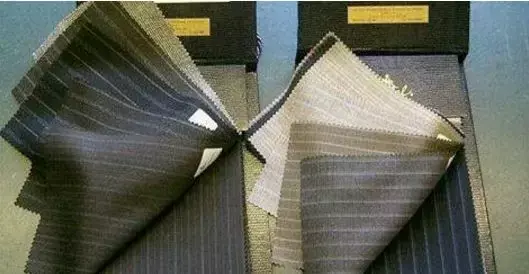
2. Select the conversion formula:
(1) , the conversion formula of metric count (N) and denier (D) = 9000/N
(2), the conversion formula of imperial count (S) and denier (D) = 5315 /S
(3), the conversion formula between dtex and tex: 1tex=10dtex
(4), tex ) and denier (D) conversion formula: tex=D/9
(5), tex (tex) and inch count (S) conversion formula: tex=K/S K Value: Pure cotton yarn K=583.1 Purified fiber K=590.5 Polyester-cotton yarn K=587.6 Cotton viscose yarn (75:25) K=584.8 Wei cotton yarn (50:50) K=587.0
(6), The conversion formula between tex (tex) and metric number (N): tex=1000/N
(7), the conversion formula between decitex (dtex) and denier (D): dtex=10D/9
(8), conversion formula of decitex (dtex) and inch count (S):
dtex=10K/S K value: pure cotton yarn K=583.1, pure fiber K=590.5, polyester-cotton yarn K=587.6, cotton viscose yarn (75:25) K=584.8
The conversion formula of cotton yarn (50:50)K=587.0 9), decitex (dtex) and metric count (N): dtex=10000/N
(10), metric centimeter ( The conversion formula between cm) and imperial inches (inch): 1inch=2.54cm
(11) The conversion formula between metric meters (M) and imperial yards (yd): 1 yard=0.9144 meters
(12), the conversion formula of satin square meter weight (g/m2) and millimeter (m/m): 1m/m=4.3056g/m2
(13), satin The conversion formula between actual weight and pound weight: pound weight (lb) = weight per meter of silk (g/m)*0.9144(m/yd)*50(yd)/453.6(g/yd






